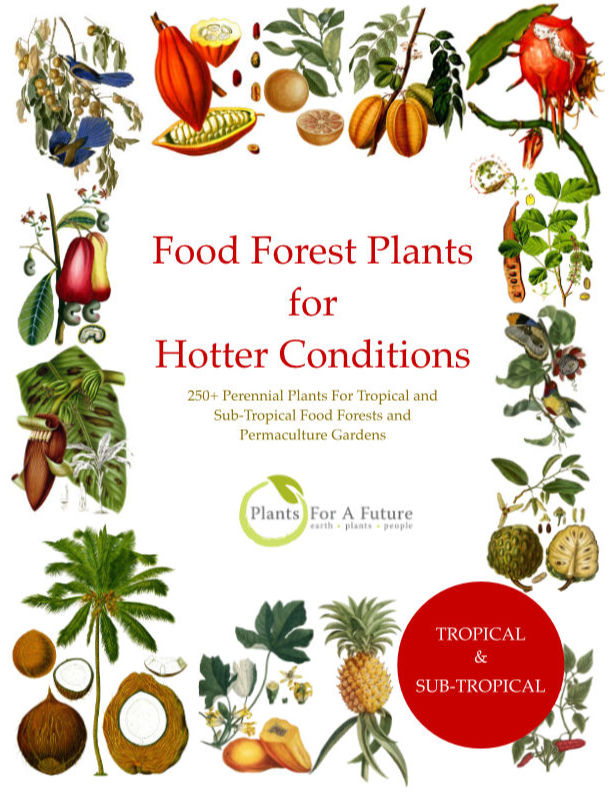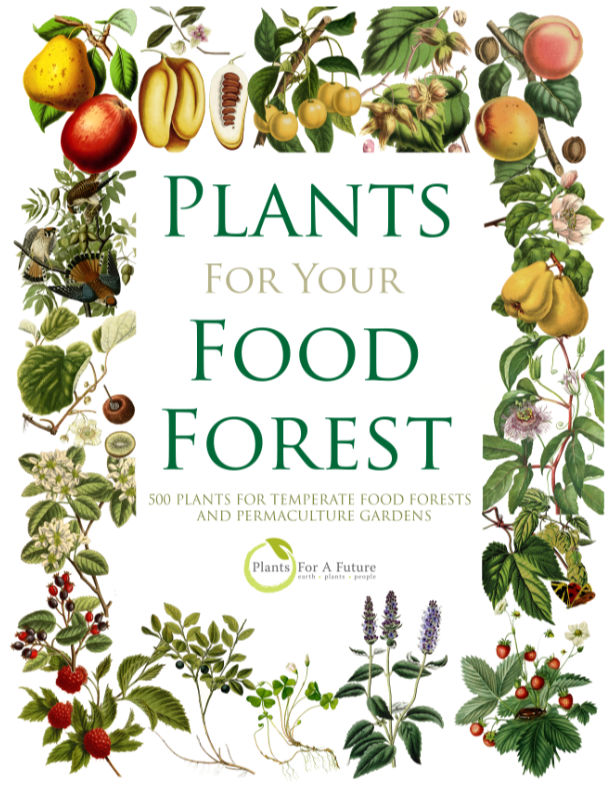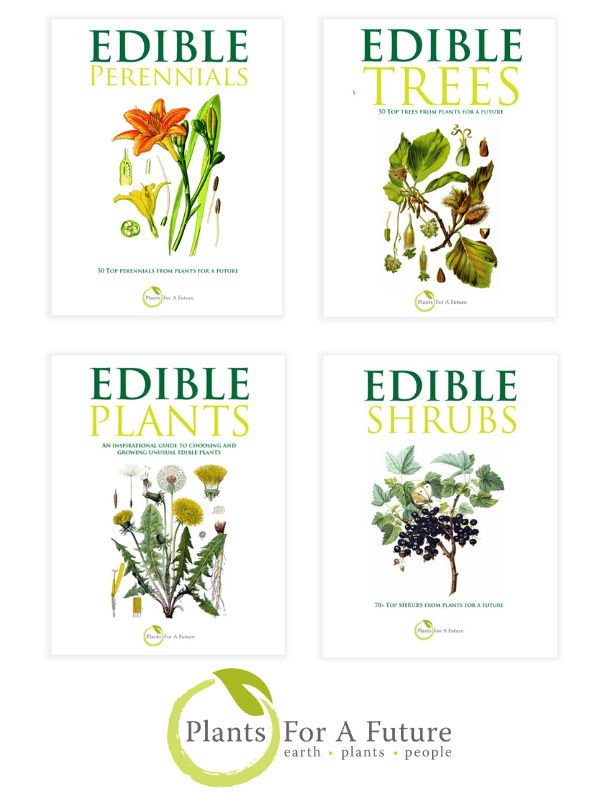Translate this page:
Summary
Physalis philadelphica, often considered the wild or semi-wild progenitor of the cultivated tomatillo (P. ixocarpa), shares many of the same characteristics and uses, both edible and non-edible. Beyond its culinary role, it serves as a valuable plant in ecological and traditional systems. The flowers attract a range of native pollinators, including specialist bees like Melitoma and Peponapis, making it a useful addition to pollinator-friendly gardens and biodiversity plantings.
Physical Characteristics

 Physalis philadelphica is a ANNUAL growing to 0.6 m (2ft).
Physalis philadelphica is a ANNUAL growing to 0.6 m (2ft).
See above for USDA hardiness. It is hardy to UK zone 7 and is not frost tender. It is in flower from July to September, and the seeds ripen from August to October. The species is hermaphrodite (has both male and female organs) and is pollinated by Insects.
Suitable for: light (sandy), medium (loamy) and heavy (clay) soils and prefers well-drained soil. Suitable pH: mildly acid, neutral and basic (mildly alkaline) soils. It can grow in semi-shade (light woodland) or no shade. It prefers moist soil.
UK Hardiness Map
US Hardiness Map
Synonyms
P. aequanta. Jacq.
Plant Habitats
Cultivated Beds;
Edible Uses
Edible Parts: Fruit
Edible Uses:
Fruit - raw or cooked[2, 50, 105]. A delicious flavouring when used like a tomato and added to soups, stews etc[K]. The plant conveniently wraps up each fruit in its own 'paper bag' (botanically, the calyx) to protect it from pests and the elements. This calyx is toxic and should not be eaten. The fruit can be stored for up to a year if picked before they are fully ripe and left inside their calyx.
References More on Edible Uses
Medicinal Uses
Plants For A Future can not take any responsibility for any adverse effects from the use of plants. Always seek advice from a professional before using a plant medicinally.
Ophthalmic
The juice from the berries has been used as an eyewash[257].
References More on Medicinal Uses
The Bookshop: Edible Plant Books
Our Latest books on Perennial Plants For Food Forests and Permaculture Gardens in paperback or digital formats.

Edible Tropical Plants
Food Forest Plants for Hotter Conditions: 250+ Plants For Tropical Food Forests & Permaculture Gardens.
More

Edible Temperate Plants
Plants for Your Food Forest: 500 Plants for Temperate Food Forests & Permaculture Gardens.
More

More Books
PFAF have eight books available in paperback and digital formats. Browse the shop for more information.
Shop Now
Other Uses
Physalis philadelphica, often considered the wild or semi-wild progenitor of the cultivated tomatillo (P. ixocarpa), shares many of the same characteristics and uses, both edible and non-edible. Beyond its culinary role, it serves as a valuable plant in ecological and traditional systems. The flowers attract a range of native pollinators, including specialist bees like Melitoma and Peponapis, making it a useful addition to pollinator-friendly gardens and biodiversity plantings. It also has potential as a trap crop in integrated pest management systems, diverting pests away from more vulnerable solanaceous crops like tomatoes and eggplants. The plant produces a good amount of biomass, which can be used for mulch or compost, contributing to soil health and fertility. In Mexican traditional medicine, P. philadelphica has been used for its anti-inflammatory and antimicrobial properties, with applications such as herbal teas and topical treatments for skin conditions. While scientific studies are limited, its ethnobotanical use is well-documented in some regions. The plant’s papery husks also have occasional cultural applications, such as in natural dyes or educational displays. Taken together, Physalis philadelphica represents a multifunctional species with potential roles in agroecology, traditional medicine, and ecological gardening.
Special Uses
References More on Other Uses
Cultivation details
Succeeds in any well-drained soil in full sun or light shade[200]. Cultivated for its edible fruit in the Ukraine[50]. There are some named varieties[183, 200]. 'Purple de Milpa' has small purple-tinged fruits with a sharp flavour, they keep well[200]. Closely related to P. ixocarpa, this is probably the wild species that P. ixocarpa was derived from in cultivation[170].
References Carbon Farming Information and Carbon Sequestration Information
Temperature Converter
Type a value in the Celsius field to convert the value to Fahrenheit:
Fahrenheit:
The PFAF Bookshop
Plants For A Future have a number of books available in paperback and digital form. Book titles include Edible Plants, Edible Perennials, Edible Trees,Edible Shrubs, Woodland Gardening, and Temperate Food Forest Plants. Our new book is Food Forest Plants For Hotter Conditions (Tropical and Sub-Tropical).
Shop Now
Plant Propagation
Seed - sow March/April in a greenhouse only just covering the seed. Germination usually takes place quickly and freely. Prick out the seedlings into individual pots of fairly rich soil when they are large enough to handle and plant them out after the last expected frosts. Consider giving them some protection such as a cloche until they are growing away well. Diurnal temperature fluctuations assist germination[170].
Other Names
If available other names are mentioned here
Wild Tomatillo, Mexican groundcherry.
Native Range
NORTHERN AMERICA: Mexico (Zacatecas, Aguascalientes, Jalisco) SOUTHERN AMERICA: Guatemala, El Salvador
Weed Potential
Right plant wrong place. We are currently updating this section.
Please note that a plant may be invasive in one area but may not in your area so it's worth checking.
Conservation Status
IUCN Red List of Threatened Plants Status :

| Related Plants
|
| Latin Name | Common Name | Habit | Height | Hardiness | Growth | Soil | Shade | Moisture | Edible | Medicinal | Other |
| Physalis acutifolia | Sharp-Leaf Ground Cherry | Annual | 0.0 |
0-0
| | LMH | SN | M | 2 | 0 | 0 |
| Physalis alkekengi | Winter Cherry, Strawberry groundcherry,Ground Cherry, Chinese Lantern | Perennial | 0.3 |
6-9
| F | LMH | SN | M | 2 | 2 | |
| Physalis alkekengi franchetii | Winter Cherry | Perennial | 0.5 |
5-9
| | LMH | SN | M | 2 | 2 | 2 |
| Physalis angulata | Cutleaf Ground Cherry | Annual | 0.8 |
0-0
| | LMH | SN | M | 3 | 1 | 0 |
| Physalis angustifolia | Coastal groundcherry | Perennial | 0.0 |
0-0
| | LMH | N | M | 2 | 0 | |
| Physalis arenicola | Cypresshead groundcherry | Perennial | 0.0 |
0-0
| | LMH | N | M | 2 | 0 | |
| Physalis carpenteri | Carpenter's groundcherry | Annual | 0.0 |
0-0
| | LMH | N | M | 2 | 0 | |
| Physalis caudella | Southwestern groundcherry | Perennial | 0.0 |
0-0
| | LMH | N | M | 2 | 0 | |
| Physalis crassifolia | Yellow nightshade groundcherry | Perennial | 0.3 |
0-0
| | LMH | N | DM | 2 | 0 | |
| Physalis foetens | | Annual | 0.6 |
-
| | LMH | N | M | 2 | 0 | |
| Physalis foetens neomexicana | | Annual | 0.6 |
-
| | LMH | N | DM | 2 | 0 | |
| Physalis greenei | | Annual | 0.3 |
-
| | LMH | N | DM | 2 | 0 | |
| Physalis hederaefolia cordifolia | Ground Cherry | Perennial | 0.3 |
-
| | LMH | SN | DM | 2 | 0 | |
| Physalis heterophylla | Clammy Ground Cherry, Rowell's groundcherry | Perennial | 0.9 |
7-10
| | LMH | SN | DM | 3 | 1 | 0 |
| Physalis ixocarpa | Tomatillo | Annual | 1.2 |
7-10
| | LMH | SN | DM | 4 | 0 | 3 |
| Physalis lanceolata | Ground Cherry, Sword groundcherry | Perennial | 0.4 |
0-0
| | LMH | SN | DM | 2 | 1 | |
| Physalis latiphysa | Broadleaf groundcherry | | 0.0 |
0-0
| | LMH | N | M | 2 | 0 | |
| Physalis macrophysa | Bladder Ground Cherry, Longleaf groundcherry | Perennial | 1.5 |
0-0
| | LMH | N | M | 2 | 0 | |
| Physalis minima | Sunberry, Pygmy groundcherry | Annual | 0.5 |
0-0
| | LMH | SN | DM | 3 | 1 | |
| Physalis missouriensis | Missouri groundcherry | Annual | 1.0 |
0-0
| | LMH | N | M | 2 | 0 | |
| Physalis obscura | | Annual | 1.0 |
-
| | LMH | SN | M | 2 | 0 | |
| Physalis peruviana | Goldenberry, Peruvian groundcherry | Perennial | 1.2 |
10-12
| M | LMH | SN | M | 5 | 1 | 3 |
| Physalis pruinosa | Strawberry Tomato | Annual | 0.6 |
4-8
| | LMH | SN | DM | 3 | 0 | |
| Physalis pubescens | Ground Cherry, Husk tomato | Annual | 0.5 |
10-12
| | LMH | SN | DM | 4 | 1 | 0 |
| Physalis pumila | Prairie Ground Cherry, Dwarf groundcherry | Perennial | 0.3 |
0-0
| | LMH | N | M | 2 | 0 | |
| Physalis subglabrata | Longleaf groundcherry | Perennial | 1.5 |
4-8
| | LMH | SN | DM | 2 | 0 | |
| Physalis variovestita | Field groundcherry | | 0.0 |
0-0
| | LMH | N | M | 2 | 0 | |
| Physalis virginiana | Virginia Ground Cherry | Perennial | 0.6 |
6-9
| | LMH | SN | M | 2 | 1 | 0 |
| Physalis virginiana sonorae | | Perennial | 0.0 |
-
| | LMH | SN | DM | 2 | 0 | |
|
|
Growth: S = slow M = medium F = fast. Soil: L = light (sandy) M = medium H = heavy (clay). pH: A = acid N = neutral B = basic (alkaline). Shade: F = full shade S = semi-shade N = no shade. Moisture: D = dry M = Moist We = wet Wa = water.
Now available:
Food Forest Plants for Mediterranean Conditions
350+ Perennial Plants For Mediterranean and Drier Food Forests and Permaculture Gardens.
[Paperback and eBook]
This is the third in Plants For A Future's series of plant guides for food forests tailored to
specific climate zones. Following volumes on temperate and tropical ecosystems, this book focuses
on species suited to Mediterranean conditions—regions with hot, dry summers and cool, wet winters,
often facing the added challenge of climate change.
Read More
Expert comment
Author
Lam.
Botanical References
170200
Links / References
For a list of references used on this page please go here
Readers comment
© 2010, Plants For A Future. Plants For A Future is a charitable company limited by guarantee, registered in England and Wales. Charity No. 1057719, Company No. 3204567.